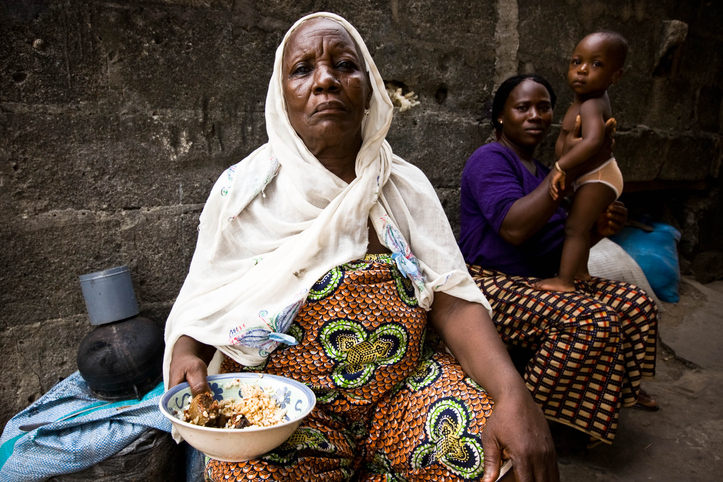What enhances poverty eradication? This column presents new evidence on global variation in poverty reduction during the period since the Millennium Development Goals (MDGs) were established in 2000. The authors conclude that the adoption of development goals per se may not be enough to eradicate poverty. Institutional conditions at the national level matter, as developing countries with the greatest state effectiveness can reduce income poverty much faster than those with the least effective states.
Progress in poverty reduction was central to the policy challenges established in the Millennium Development Goals (MDGs) in 2000. By 2013, the rate of extreme poverty was only a third of the 1990 value.
But according to the World Poverty Clock, a population of close to a billion is falling short of achieving the global goal of ending poverty by 2030—the current escape rate is 0.5 people per second against the required figure of 1.6. This objective remains central under the successors to the MDGs, the Sustainable Development Goals (SDGs), which officially came into force at the start of 2016.
The SDGs are a useful instrument of global governance that will encourage countries to act, with the ambition of eradicating extreme poverty altogether under SDG 1. But is the adoption of development goals per se enough to eradicate poverty, or are other governance conditions needed at the national level? Here, we discuss new evidence on why some countries reduce income poverty faster than others, learning lessons from recent experience.
In a new study from the Effective States and Inclusive Development Centre (ESID) now published in World Development, we look at the role of the MDGs and ‘state capacity’ in accelerating poverty reduction. State capacity refers to the effectiveness of government agencies in collecting and spending taxes and implementing public policies.
We find that adoption of the MDGs per se accelerated poverty reduction. But we also find that in more effective states, income poverty has been reduced at a significantly faster speed. This explains why countries were much more likely to achieve MDG 1: halving poverty. Our estimates suggest that countries with the strongest state capacity can reduce income poverty at up to twice the speed of countries with the weakest capacity.
Studying a sample of up to 89 developing countries between 1990 and 2013, our analysis proceeds in three steps.
First, we show whether, and how fast, developing economies with higher income poverty levels experienced larger reductions in their poverty rates, so as to close the gap with economies with lower income poverty levels—poverty convergence. We do so by using standard international measures: poverty headcount and poverty gap, at $1.25 and $2 a day. We find that the poverty headcount and poverty gap measures tend to decrease faster in countries with initially higher income poverty.
Good news? Yes, but what explains this convergence in income poverty measures? Does adoption of the MDGs matter?
The second step of our analysis provides an answer, by examining whether the convergence process accelerated after 2000. After accounting for country cases with abnormal performances, we find that it did, suggesting that the adoption of the MDGs was a boost for poverty reduction.
This presumably reflects the pressure on individual countries to design and implement poverty reduction programs. For example, Poverty Reduction Strategy Papers became a routine part of national development plans.
But this still leaves substantial unexplained variation in poverty reduction performance across countries. As Figure 1 shows, while the estimates approximate well the trends of a significant part of our sample, they may not be able to explain the situation of a number of countries, which, although showing similar levels of initial poverty, present substantial variations in their poverty reduction achievements.
Compare, for example, the following two groups of countries: Lesotho, Madagascar, Nigeria, and Zambia; with Cambodia, China, Indonesia, and Vietnam. Initial headcount ratios at $1.25 a day were similar in both groups. Yet the latter group has been successful in reducing poverty, while the former has not.
Figure 1: Initial level of poverty versus subsequent change (headcount measures)

Source: Asadullah and Savoia (2018) ‘Poverty Reduction During 1990–2013: Did Millennium Development Goals Adoption and State Capacity Matter?’, World Development 105: 70–82.
What explains such disparity? Could this reflect differences in governance conditions at the national level, such as state capacity? The third and final step of our analysis addresses this question.
State capacity is greater when ruling elites are subject to more limits on the exercise of their power. This is the case when executive power is constrained by institutionalized checks and balances.
State capacity is also greater in countries with a longer history of statehood. In these cases, a country’s ability to resolve coordination failures and to deliver goods and services to their citizens is boosted through the effects of ‘learning by doing’.
Our results offer weak evidence that constraints on the executive accelerate poverty reduction (without ruling out this channel). But they offer strong evidence that countries with a longer history of statehood and greater ability to administer their territories experience faster income poverty reduction. These countries were more likely to have achieved the MDG target of halving poverty.
The convergence parameter in the group of countries with the longest state history—Cambodia, China, Indonesia, Turkey, and Vietnam—is estimated to be approximately double the size of that for the group with the shortest state history— Lesotho, Swaziland, Zambia, and Zimbabwe (see Figure 2). Note that most of them are countries earlier identified in Figure 1 as cases where poverty reduction performance could not be explained—even when taking account of the effect of the adoption of the MDGs.
Figure 2: Speed of convergence at different levels of state capacity (headcount $1.25)

Source: Asadullah and Savoia (2018) ‘Poverty reduction during 1990–2013: Did Millennium Development Goals adoption and state capacity matter?’, World Development, Volume 105, Pages 70-82.
What are the implications of our results?
First, the institutional context matters for accelerating poverty reduction. The adoption of new development goals per se, however ambitious, may not be enough. It should be coupled with sufficient capability of designing and delivering poverty reduction strategies at the national level.
Second, as SDG 16 now incorporates aspects of state effectiveness (see Targets 16.5, 16.6 and 16.7), our results provide empirical justification for this choice. This means that looking forward to 2030, reforming state institutions could be doubly beneficial. This is a gradual process, which does not happen overnight. Yet developing stronger state capacity is nevertheless important, because it is part of a process of long-term political development that may have effects lasting beyond the SDGs.
Third, a key component of the strategy to accelerate poverty reduction with stronger state capacity requires improvements in government agencies’ effectiveness in collecting and spending taxes and implementing public policies. As we approach uncertain times for development aid, this will increase reliance on effective use of internal resources.







